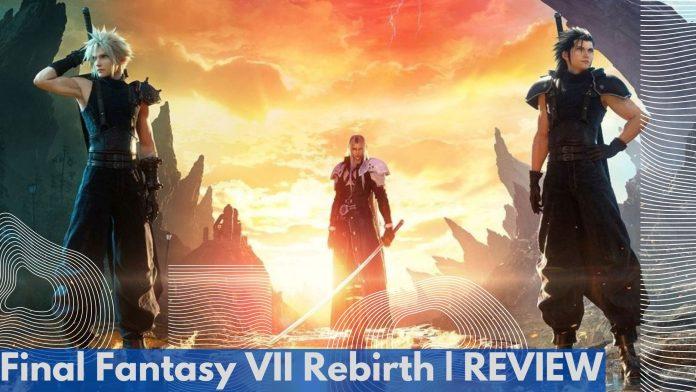Final Fantasy VII Rebirth is more than simply the next chapter in the Final Fantasy VII Remake saga, it’s a genuine step forward for the iconic RPG franchise.
Four years after the launch of Final Fantasy VII Remake, part two (of a planned trilogy) arrives in the form of Rebirth. Where the previous game was confined to the city of Midgar, Rebirth throws gamers into the larger world of Gaia and it’s ridiculously impressive.
Final Fantasy VII Rebirth
Developed By: Square Enix Creative Business Unit I
Platforms: PlayStation 5
Release Date: February 29, 2024
In the interest of transparency, I want to make it clear I haven’t finished the main story just yet. Filled with expansive regions to explore, more characters, and a deeper story, Rebirth manages to make the previous game look tiny in comparison. So, despite playing over the past few weeks, I’m still a ways off from seeing those credits roll.
That said, I’m far enough into the game—well past the half-way point in the story with several sidequests/minigames down—I feel I’ve reached the point where I can make some “firm” comments on various aspects of the game. Especially since I’m not diving into any story spoilers.
With that out of the way, let’s talk about why Final Fantasy VII Rebirth whips so much ass.
The Story So Far
Having defeated the Harbinger of Fate at the end of Final Fantasy VII Remake, and refusing Sephiroth’s offer to join him in his dastardly scheming, Cloud and the gang have effectively defeated destiny itself. The result, a potential changing of history and a future that’s no longer set in stone… Meaning anything can happen and what gamers expect to happen could be drastically different.
Still, the ending left a whole lot of unanswered questions and Rebirth kicks off by answering some of them. Namely, we get to learn more about Sephiroth, his plan, and why the hell he’s so evil. Don’t worry, I’m not going much more into the story of Rebirth, but I thought it served as an excellent opening, especially with the quick little recap video they offer before you start playing.
So if you weren’t quite able to work in that replay (like me), it won’t take you long to get caught up…
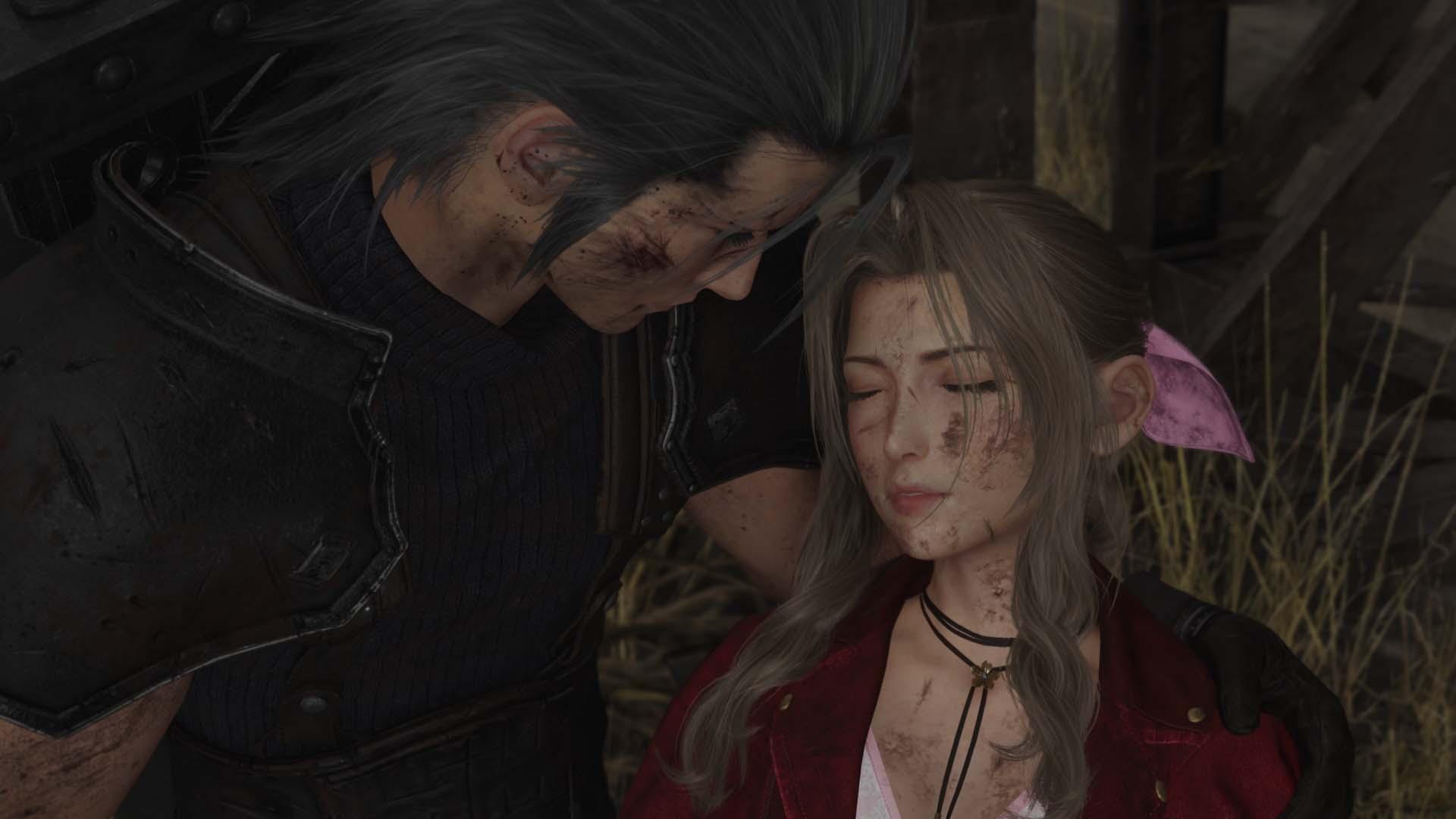
From there, the hunt is on for the former SOLIDER turned wannabe god, in a journey that takes the team across the world from Junon, Gongaga, the Golden Saucer, and so much more. All the while, they’ll have to deal with Shinra continuing to nip at their heels, new allies, and a host of new creatures.
Even as the fates have been foiled, fans of the original will still find plenty of familiar territory here. There are newer story elements, and whole characters, but these only enhance our connection to the world and the main characters’ journey. While some fans were irked by the changes made in the first game, I’m glad these haven’t been straight up retellings of the story.
Instead, we get something that goes beyond mere technical and gameplay upgrades. A story that manages to feel familiar and hit those high moments with beloved characters, while still feeling fresh and inviting for newcomers. There’s just enough changed to make it feel like a new experience, making it so everyone gets to enjoy the story as it unfolds.
I love this approach and it continues nicely into Rebirth. Hell, there are even some fun continuations to the brand new story/character elements that I thought were pretty damn fun.
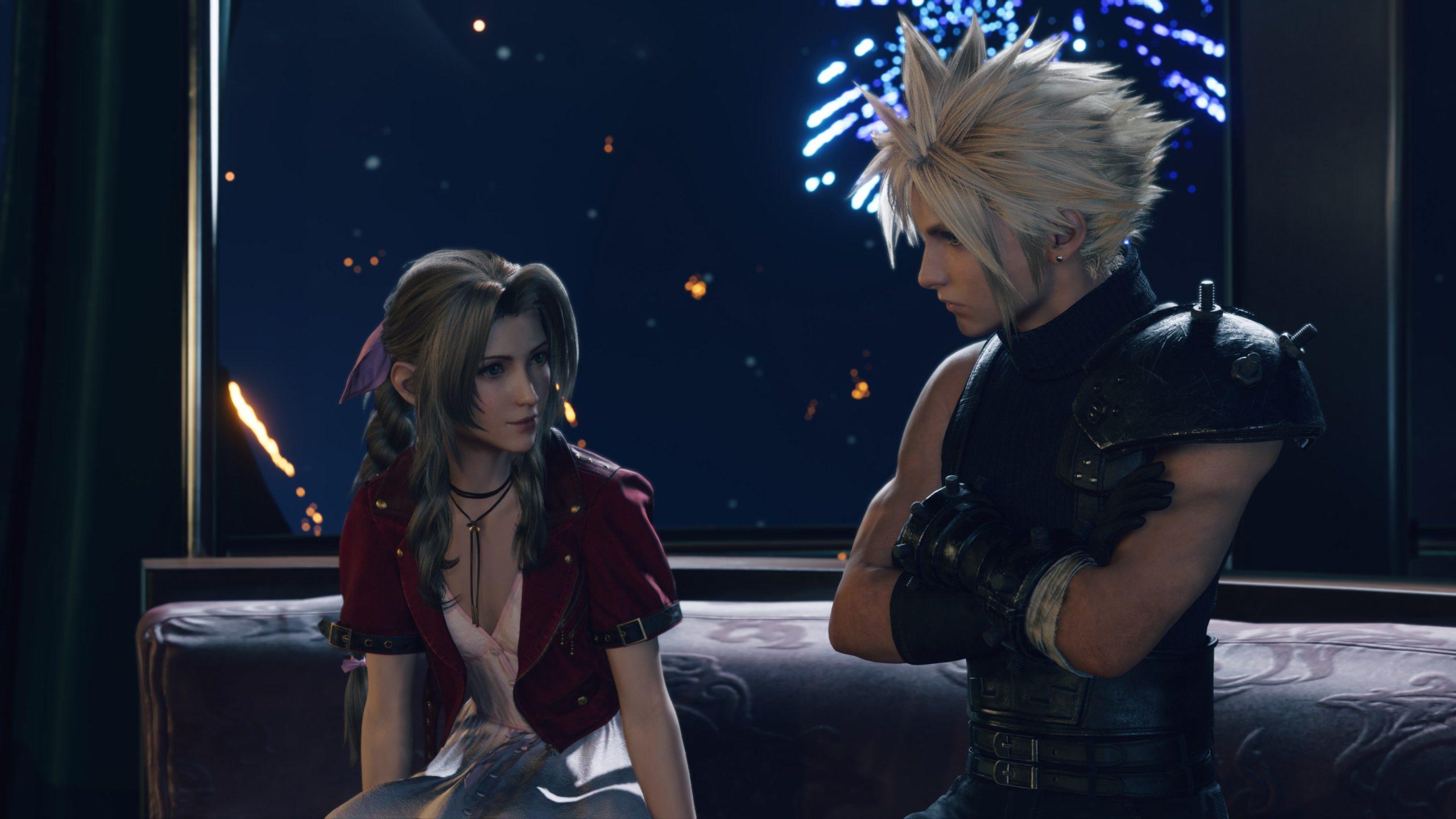
The Middle-Chapter
One of the guiding ideas behind the Final Fantasy VII Remake games is that they’re meant to feel like titles which can standalone, while still contributing to a larger overall story. The first game, Remake, did this pretty well (even if it’s enigmatic). While the ending helps set the stage for more adventures to come, there’s definitely the sense of a complete story having been told.
Rebirth does a solid job of feeling like it’s own thing and telling a story that largely works on its own (so far at least). Even so, there’s an undeniable sense you’re jumping into the middle of things; leaving you a little off-balance at first. Almost like coming into a movie theater after the film’s already started, so you spend the next 10-15 minutes using context clues and dialog to “catch-up” on what you missed. Thankfully, the feeling doesn’t last long and the meat of the new story captures you fully.
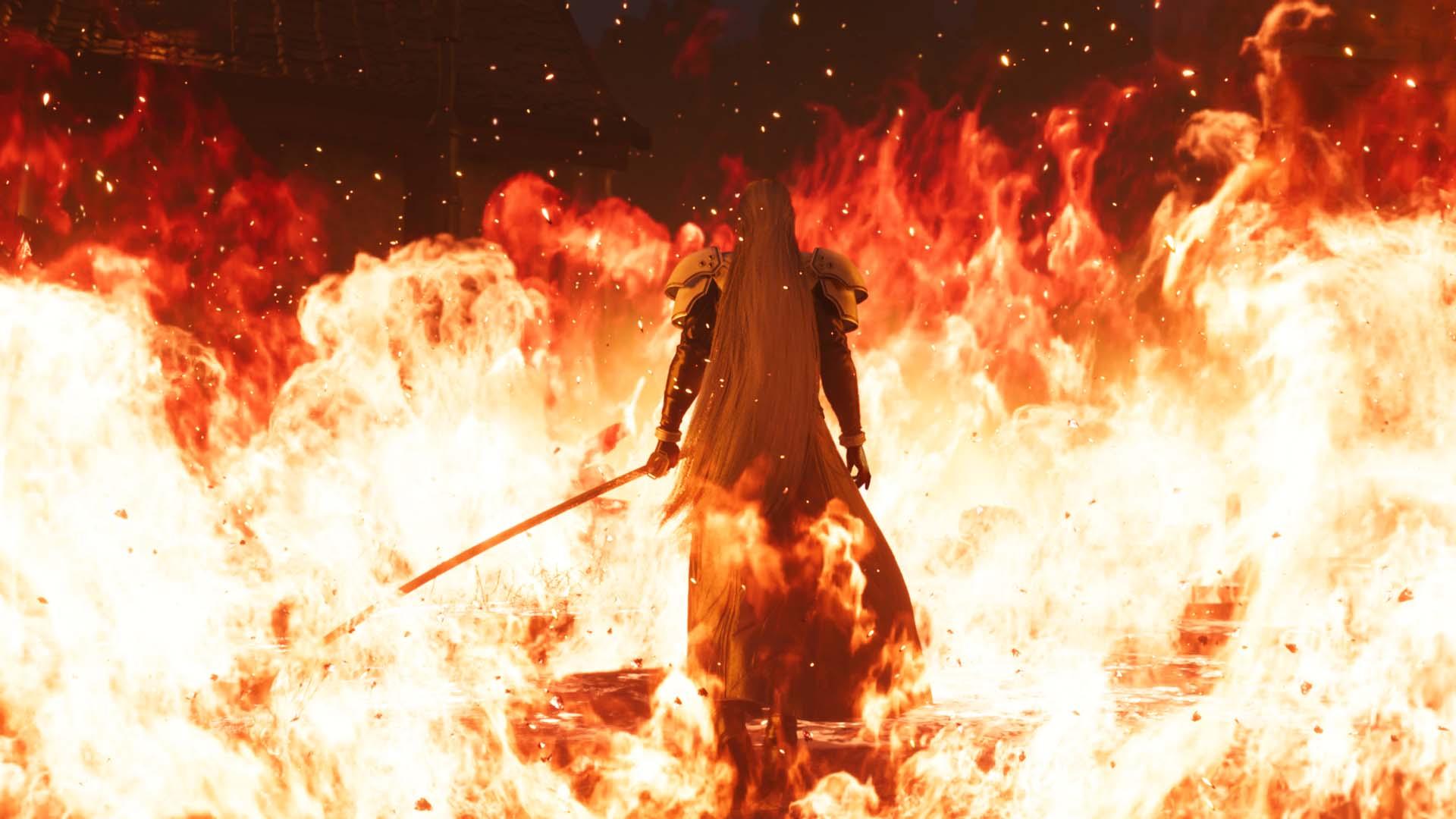
Ultimately, if you’re wondering whether or not you can play Rebirth without Remake; the short answer is ‘Yes.’ The long answer is you probably won’t get as much out of Rebirth until you’re much further along in the game. In this way, Rebirth is very much the middle chapter of a trilogy. Sure it has standalone aspects (and I suspect the ending will feel mostly satisfying), but it’s far more engaging in context of the whole. This isn’t necessarily a bad thing, however!
For one, we don’t have to start fresh with a new team of people. Instead, we get to catch up with familiar faces who are already bound to one another. There’s an instant camaraderie among the characters, and the easy banter/inside jokes makes it feel like you’re catching up with old friends.
I’m the first to admit it took me a while to get into Remake. The deluge of characters and lore was a lot all at once and the characters had to grow on me. There’s none of that issue here in Rebirth, and the result is you start off with a significant level of investment in the story right off the bat. Not every sequel is able to pull this off (especially in the RPG space), but Rebirth handles it expertly.
Because of that, it’s been super difficult to put down, and each new story/character moment leaves me eager for more. I have the feeling when the credits roll, the wait for the next game is going to feel incredibly long….
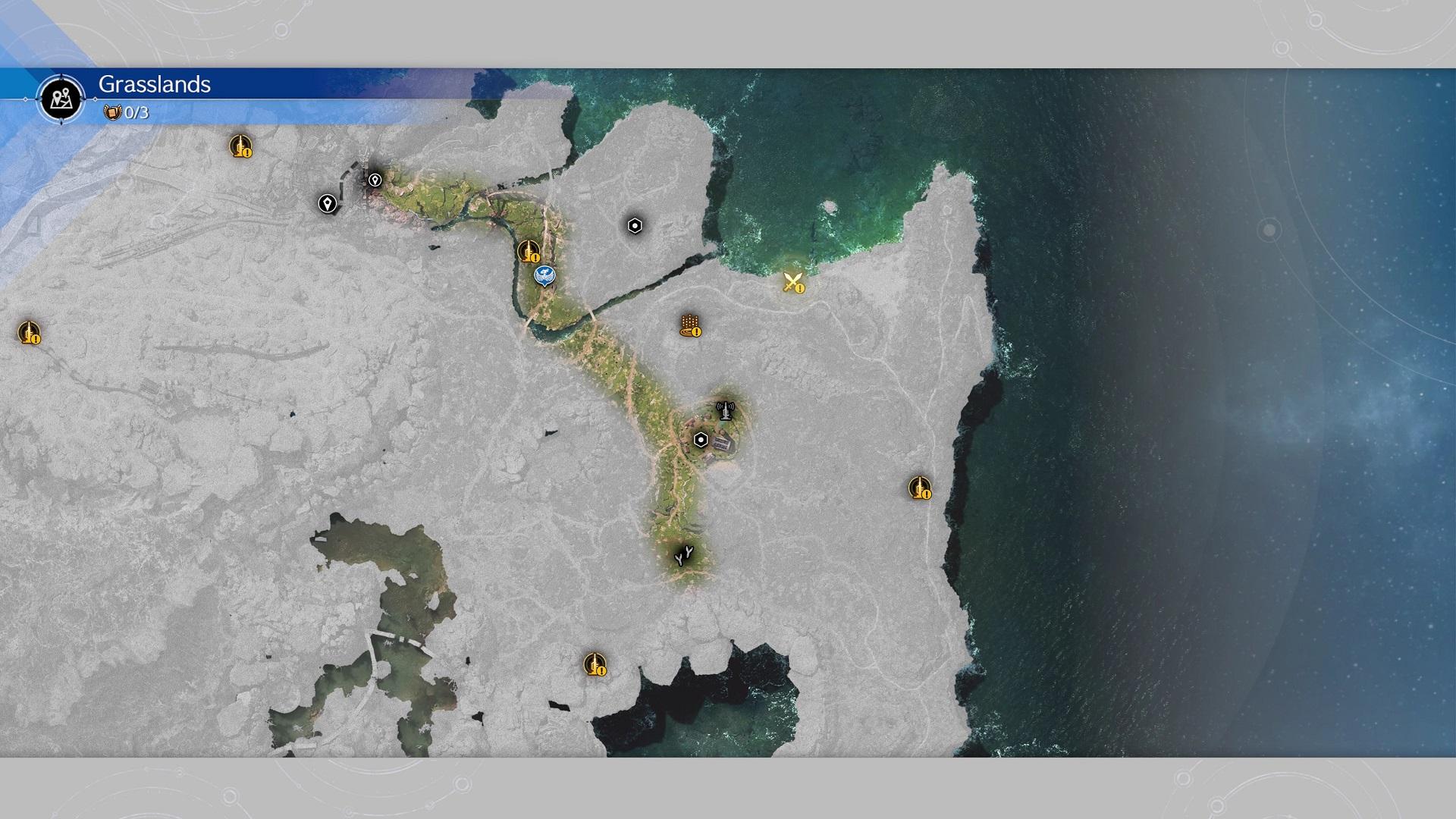
Open(ish) World
Thankfully, Rebirth offers gamers much more to do aside from the main story. As with any good RPG, there are a plethora of sidequests to undertake that come in a number of forms (which I’ll discuss in a bit). The main story feels like the tip of the ice-berg, however, as the game takes on a more open-world format this time around.
Gone are the limitations of Midgard, and we’re in the wide open world, exploring continents. The major cities you come across (and even some smaller villages) serve as hubs where you can rest up, restock, and take on new quests. The rest is open for exploration…mostly.
There are a few limitations but generally speaking, if you can see it within the game world, you can get to it. Traversal is far more open this time around as you can climb the terrain, hop over stuff, and use other resources to get around. There are chocobos of course, with different kinds in different regions (some of which can climb sheer cliffs, others can fly/float), and even some honest to goodness VEHICLES to get around in.
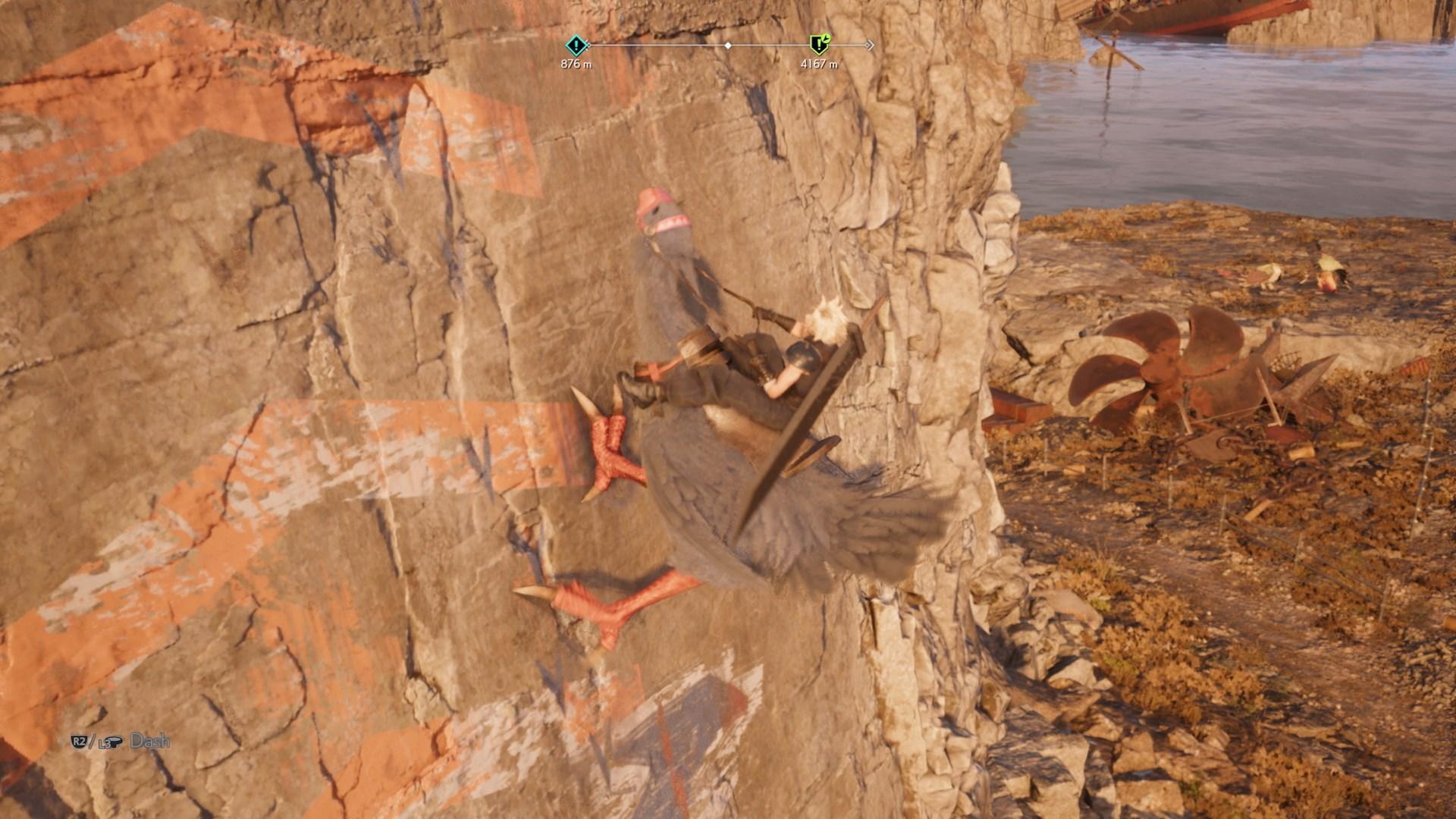
Having this sort of freedom (much of which opens up early on), is such a nice contrast to the previous game. Exploring the open areas, listening to your party members talk to one another as you go, and stumbling across random people/houses, makes the world feel alive in a whole new way. It also does wonders for deepening the overall lore and investing me into the WORLD rather than just the characters.
What’s best about it, however, is how Rebirth’s world doesn’t feel overwhelming. I tend to struggle with most open-world games. With so much to do, I tend to freeze up, or mainline the story and ignore everything else. Rebirth strikes a nice balance, and feels more “open-world lite” in its approach.
The open areas do, indeed, feel vast, but not so much to the point they feel empty and take forever to cross (even on foot). Cities/hubs are also gigantic, but laid out in ways that make sense and populated with enough people to feel bustling. More so, when you come across random activities on your journey, they don’t feel like distractions from your overall quest. They’re easy enough to bypass, or mark down to return to later,
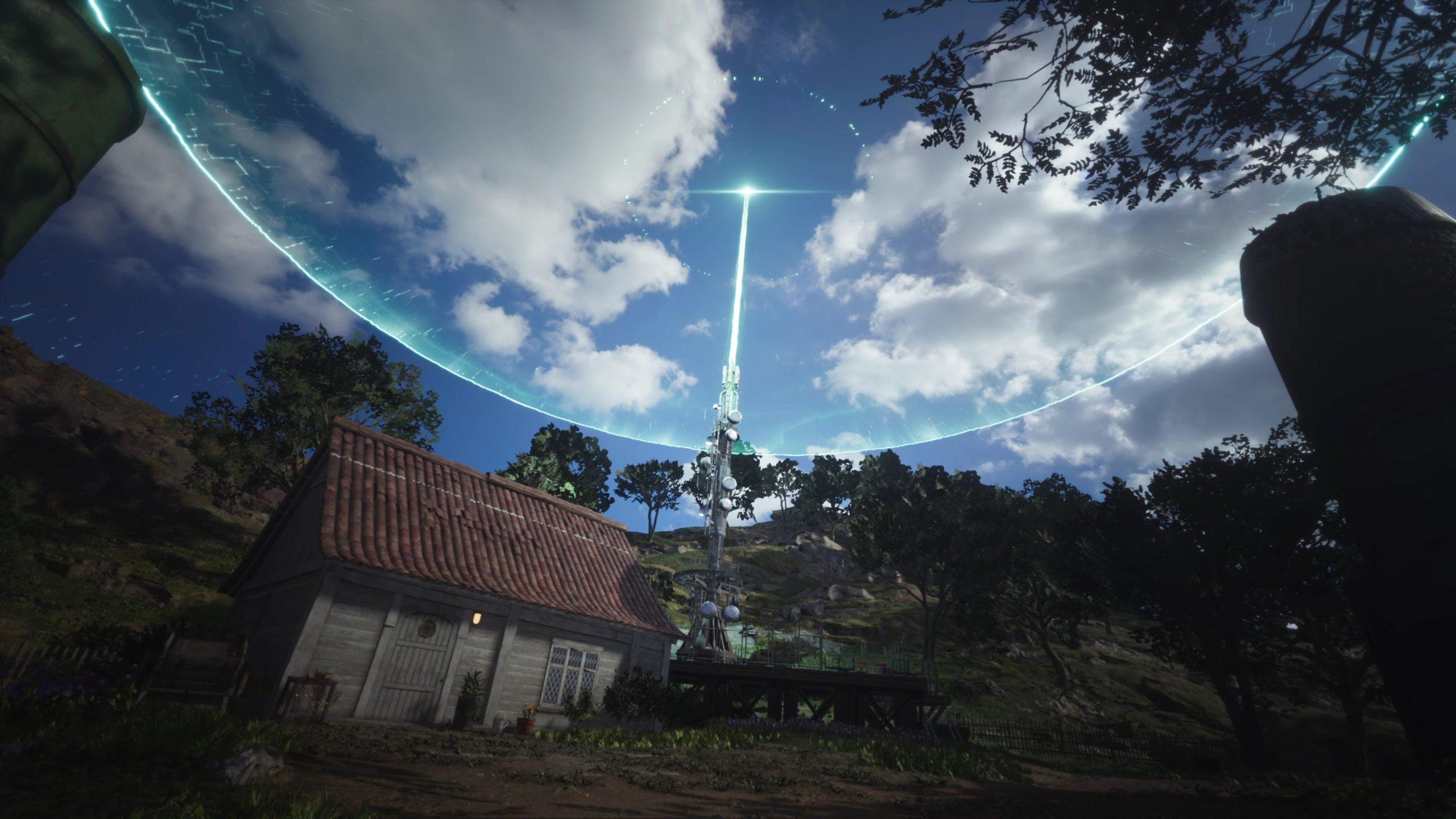
It’s hard to explain, but as someone who doesn’t like open-world games, Rebirth feels like it hits the sweet spot… Even though I wish some of the general controls had been tweaked even further.
There’s still no jump button (seriously, again). It sticks with a general action/traversal button that allows Cloud to climb rocks and hop barriers, along with guided rails for long climbs. It’s certainly a step up from the last game, but neither does it feel like other open-world action games (even in some previous Final Fantasy titles).
Rebirth isn’t like Assassin’s Creed or the recent Zelda titles, where how you explore is a major aspect of the gameplay. Exploration in Rebirth is more about finding stuff and what you uncover next, rather than how you get there. This isn’t necessarily a bad thing. Personally, I enjoyed it quite a bit, but with the amount of freedom given, the limited controls did feel a little odd at times.
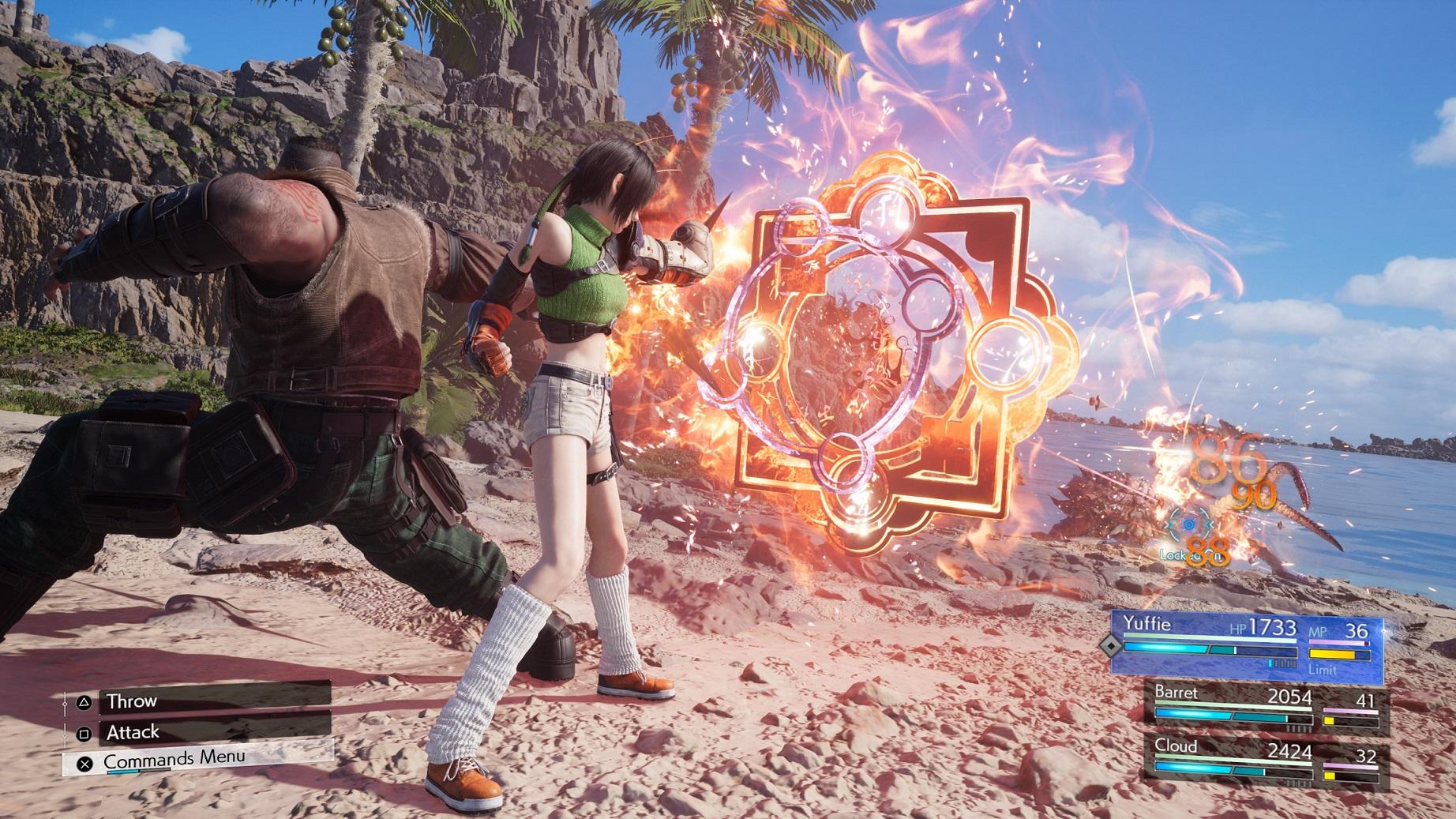
New Hotness
Despite serving as part of the Final Fantasy VII Remake trilogy, Rebirth is far from a simple retread of the previous game with a new story. While the core mechanics remain intact/familiar, there are several new additions and tweaks to those elements. Some of the changes feel like small additions, but they add up to take the experience to a new level.
Combat Tweaks -The combat in Rebirth is what will feel the most familiar to previous players as it retains the action focus, while still implementing the turn-based elements (and you can still choose to play in “Classic Mode” if you wish). You’ll have to keep an eye on your ATB guages, swap between your party members on the fly, and get strategic with your Command Menu where you dole out magical attacks, abilities, and use items. The same “Pressure/Stagger” system on enemies is in place; so if you played the FFVII Remake, you’ll feel right at home in Rebirth‘s early encounters.
That said, there are some interesting new additions that shake things up in fun ways. One of the bigger changes is the Folios System. Instead of a straightforward skill tree, each of your characters have “Folios” that can be adjusted at specific locations. Here you’ll spend skill points to unlock new abilities, stats, and general tactics. You can even buy “books” that will grant you weapon upgrades along with additional skill points for each character.
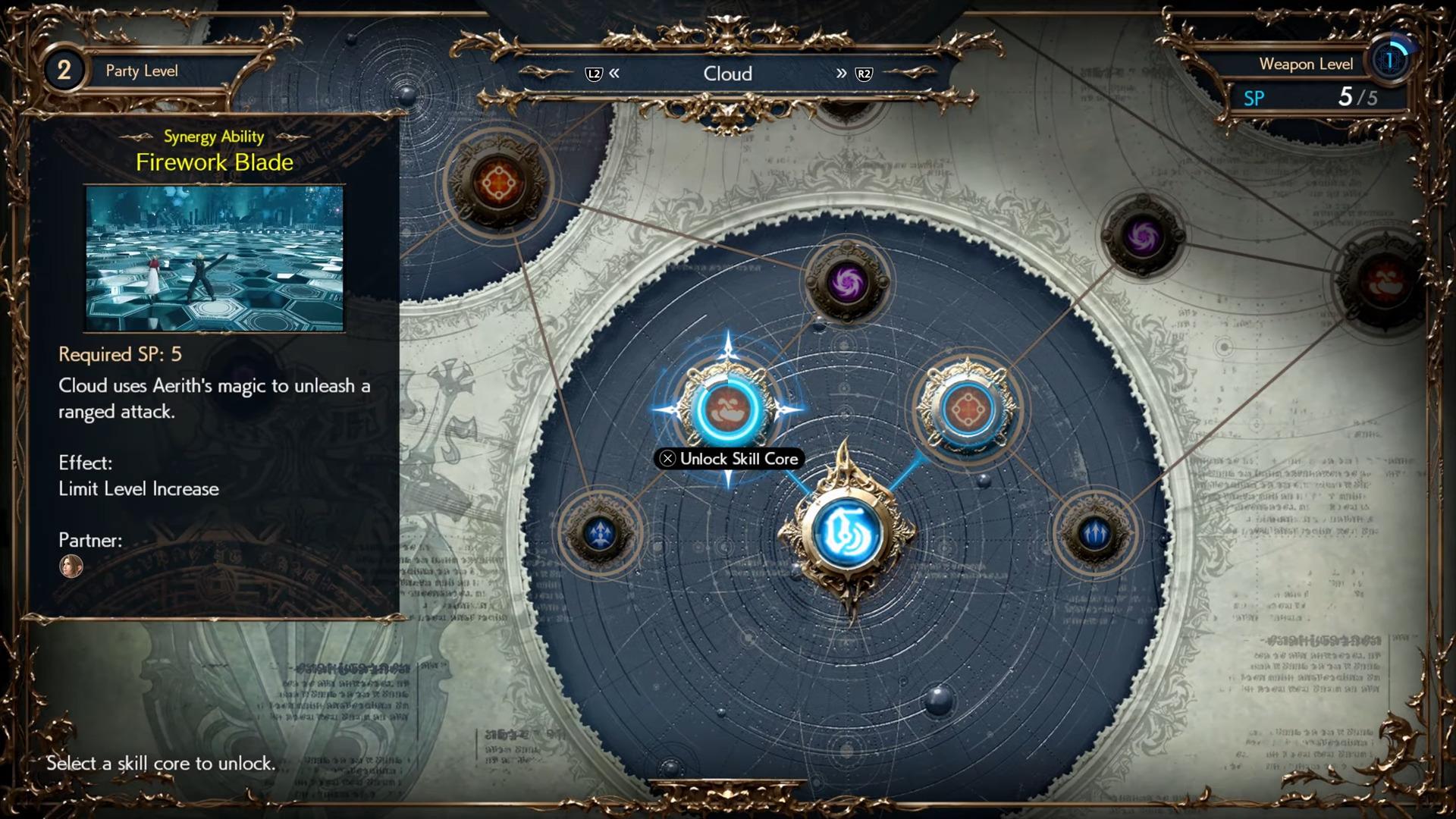
Best of all, however, none of these are set in stone. Folios can be wiped clean whenever you want, allowing you to reallocate those points to acquire an entirely different skill set. So if you’re facing a tough enemy/section, it might be worth shifting things around.
Folios are also where you’ll adjust another combat addition: Synergy Abilities. Synergy abilities allow you to unleash devastating combo attacks alongside other, specific, party members. The closer your affinity to those characters, the more powerful Synergy attacks that unlock.
I LOVE this new setup. It’s familiar enough for RPG players, but the options given between Folios and managing abilities with multiple characters, added a great deal of strategy to the game’s combat than before. Combined with the already engaging Materia system and there’s a lot of great things to play around with (if you choose).

Bonds of Friendship – Your party is integral to Rebirth. Not just in terms of the story, but in just about every layer of gameplay. Not only do characters level up, but the whole party has a leveling system. This based on doing stuff together, how characters feel about you (Cloud), and even some specific character side missions (kinda like in Mass Effect 2).
The actions you take, and the way you respond to things (even NPC dialog) can affect how each party member feels about you. These affinity levels can impact your combat prowess with Synergy Abilities, and affect in game moments (like going on a date). The game encourages you to interact with everyone on the team and chatting with them even when nothing major is going on.
It’s a subtle thing, and obviously something many RPGs do, but it manages to endear you to these characters on another level. Instead of witnessing Cloud getting closer to everyone, we’re living it alongside him.
I’m a fairly straightforward RPG gamer. I get a core battle party and I tend to stick with it throughout the whole game, no matter who all is added. That’s just how I am and always have been. With Rebirth, however, I actually wanted to keep swapping things up with my party. Between the combat tweaks and deeper character involvement, I found myself eager to see how different team-ups worked in various situations.
Items Transmuting – Rebirth brings crafting to the table! That’s right, you get an Item Transmuter early on in the game, which allows you to craft your own items (everything from potions to armor) using the resources you’ll find out in the wild. It’s such a simple addition to the formula, but I was amazed at how much it seemed to open things up. Without having to worry about running back to a shop/vending machine when I was running low on stuff, I was able to explore and battle to my hearts content.
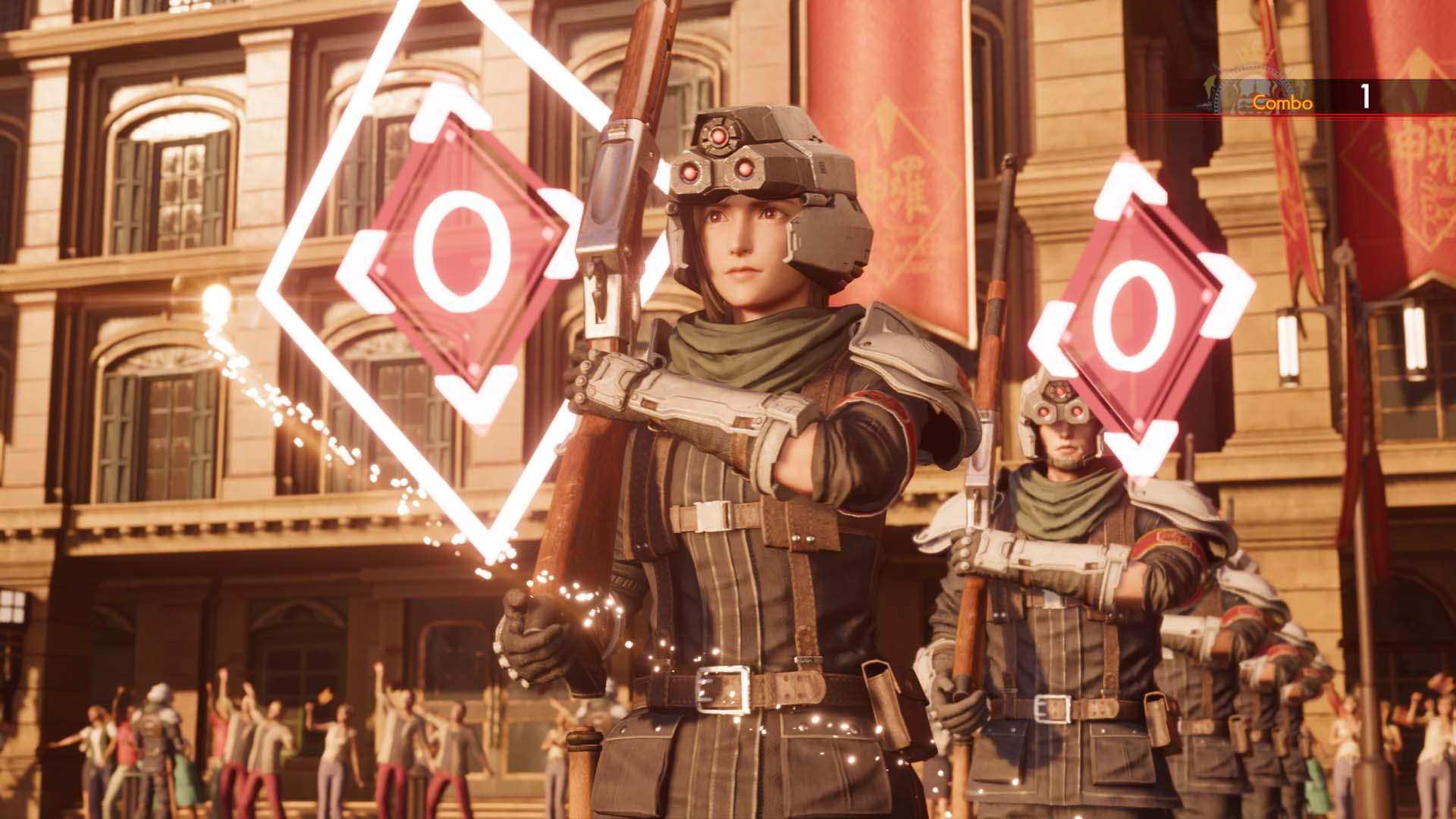
Lots to Do
There are an insane amount of things you can do in Final Fantasy VII Rebirth. It’s kinda unreal, and a bit overwhelming in a way even the larger open-world wasn’t. I won’t dive into them all here, but on top of the regular sidequests you can undertake there are a host of minigames to try out. Hell, one of the cities (Golden Saucer) seems almost dedicated to minigames, but you’ll find them all over.
There’s a fun card game called Queen’s Blood, with people to battle in every city and collectible card packs to acquire. There’s Chocobo Racing, G-Bike (an expanded version of the expressway sequences in Remake), rounding up Moogles, a 3D fighter, and even a chance to play the piano.
And that’s just the minigames. Chadley also makes a return and brings a whole host of things to do. He’ll encourage you to explore the world and acquire ‘World Intel’ which comes in a number of forms. Whether it’s battling specific fiends (with win conditions), activiating Remnawave towers, or embarking on multi-step mini-quests that unlock deeper lore about the world in general. The benefits, of course, is improved Materia and time spent with your party.
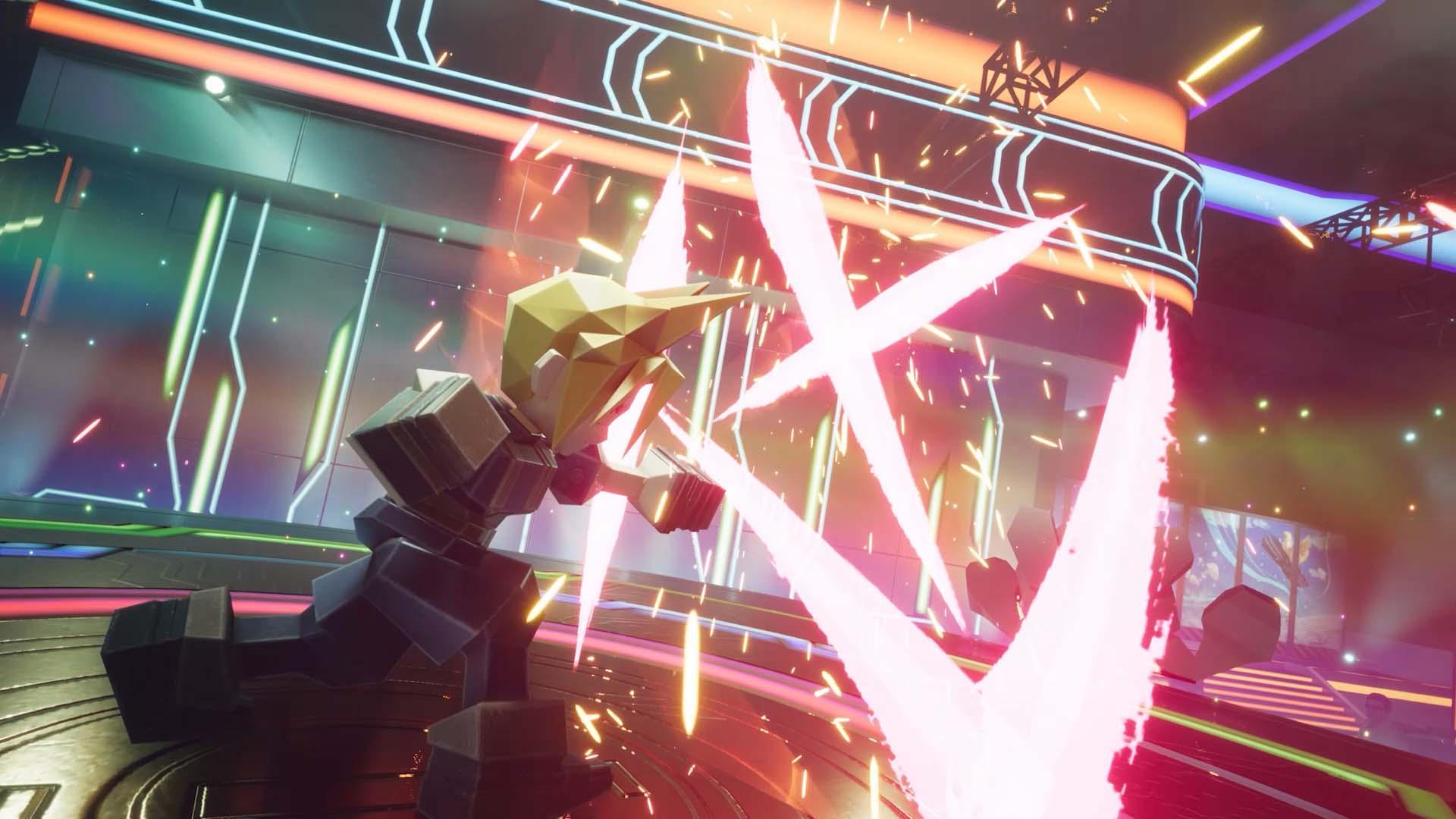
While some of these minigames aren’t likely to capture your interest for much longer than necessary, I’ve found myself enamored with all the Chadley related stuff. Like so many other elements in this game, it deepens the connection to the world overall, which makes the story beats hit harder. I also have a soft spot for Queen’s Blood, but that’s likely because I’m a huge sucker for trading card games in the real world…
Regardless, there’s no shortage of things to do during your time in the game. Even if you stick to the main story, you’re in for a lot of solid play time. So if you were worried about things running short, don’t.

Final Fantasy VII Rebirth could have easily been “more of the same” and still made tons of money. Thankfully, that’s not the case, and the result is a game that’s more engaging and all around better than the last. While some minor things hold it back from reaching the highs of other titles in the same genre, there’s no denying it’s a massive step forward.
The open-world shift and tweaks to combat all work to make the game difficult to put down. It’s been a while since a game made me do a “just one more” late into the night, but Rebirth has kept me coming back day after day. Even now, as I took time away to write this review, I find myself itching to get back to the action.

